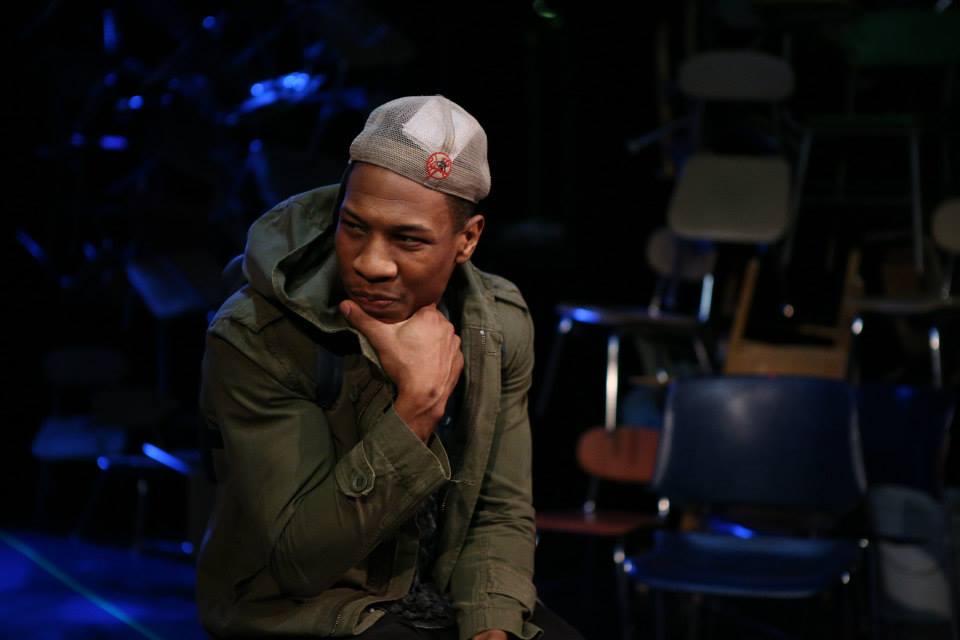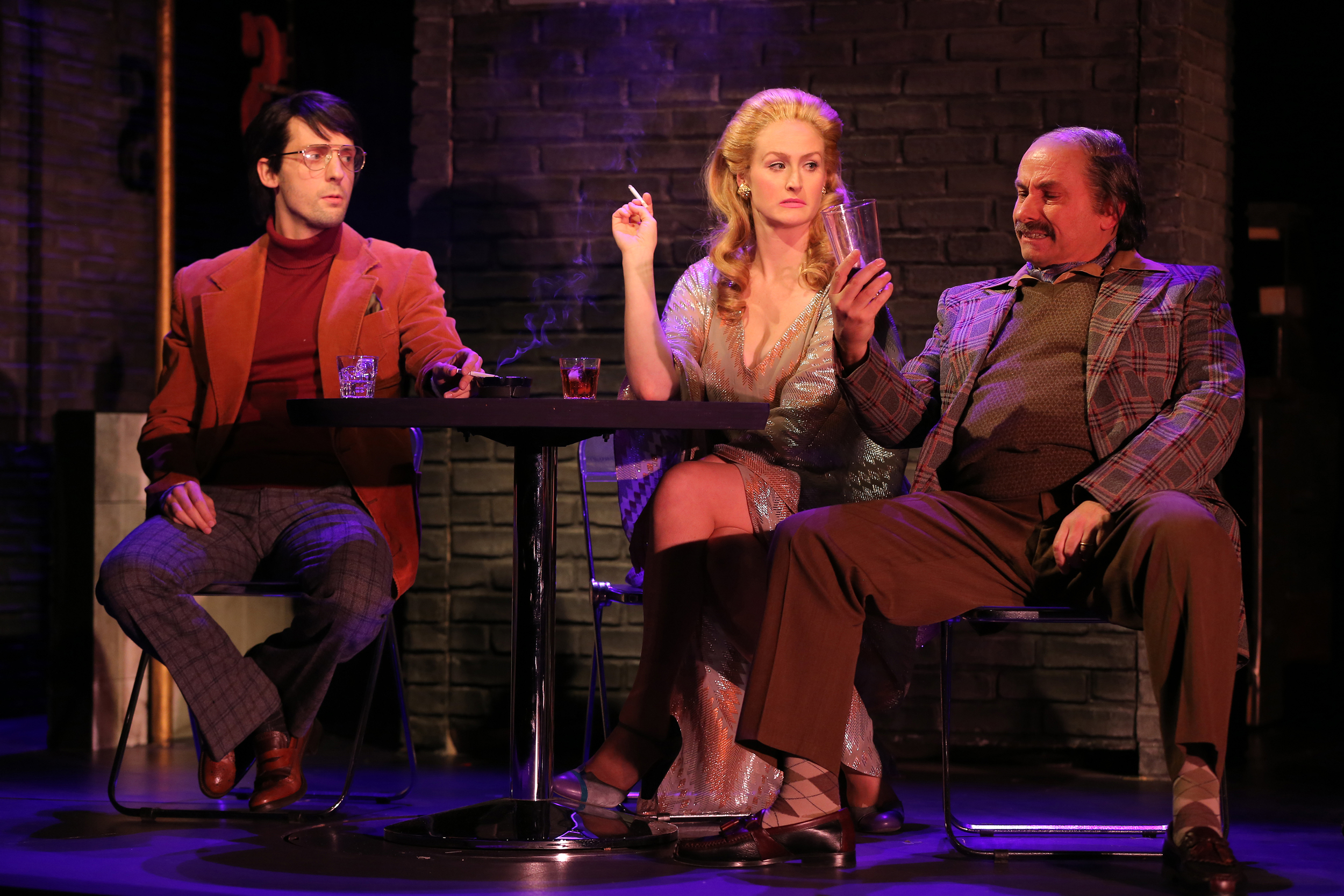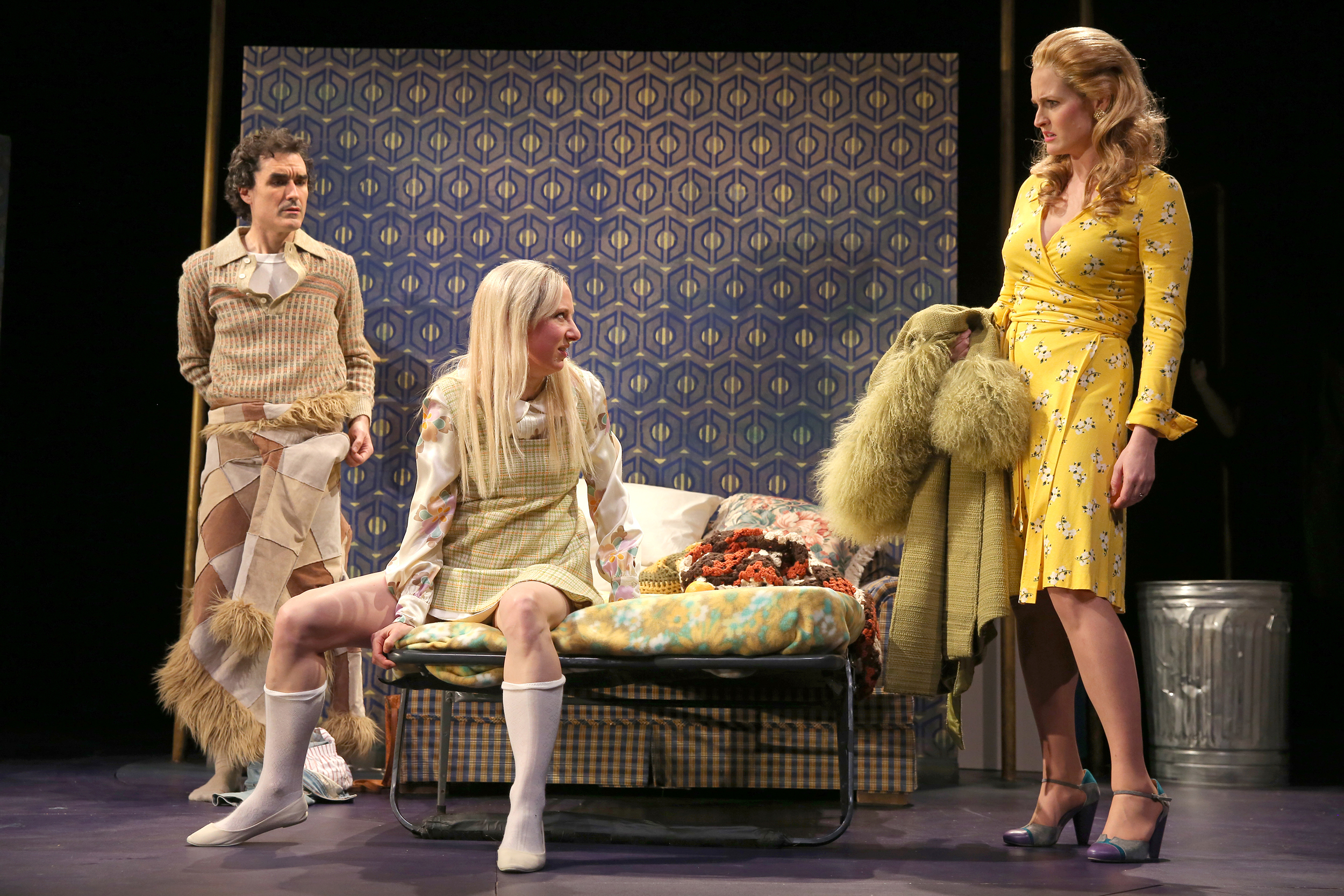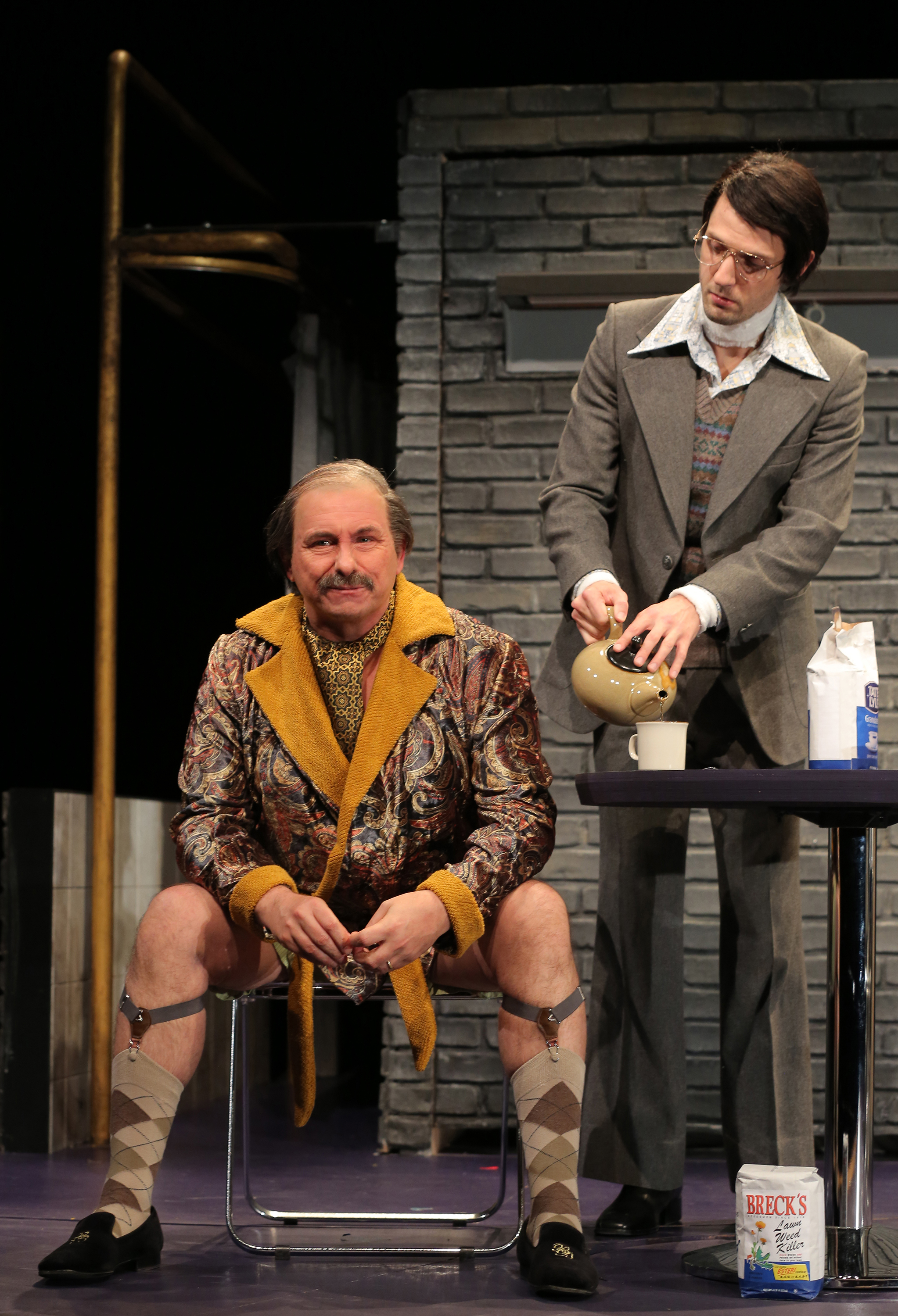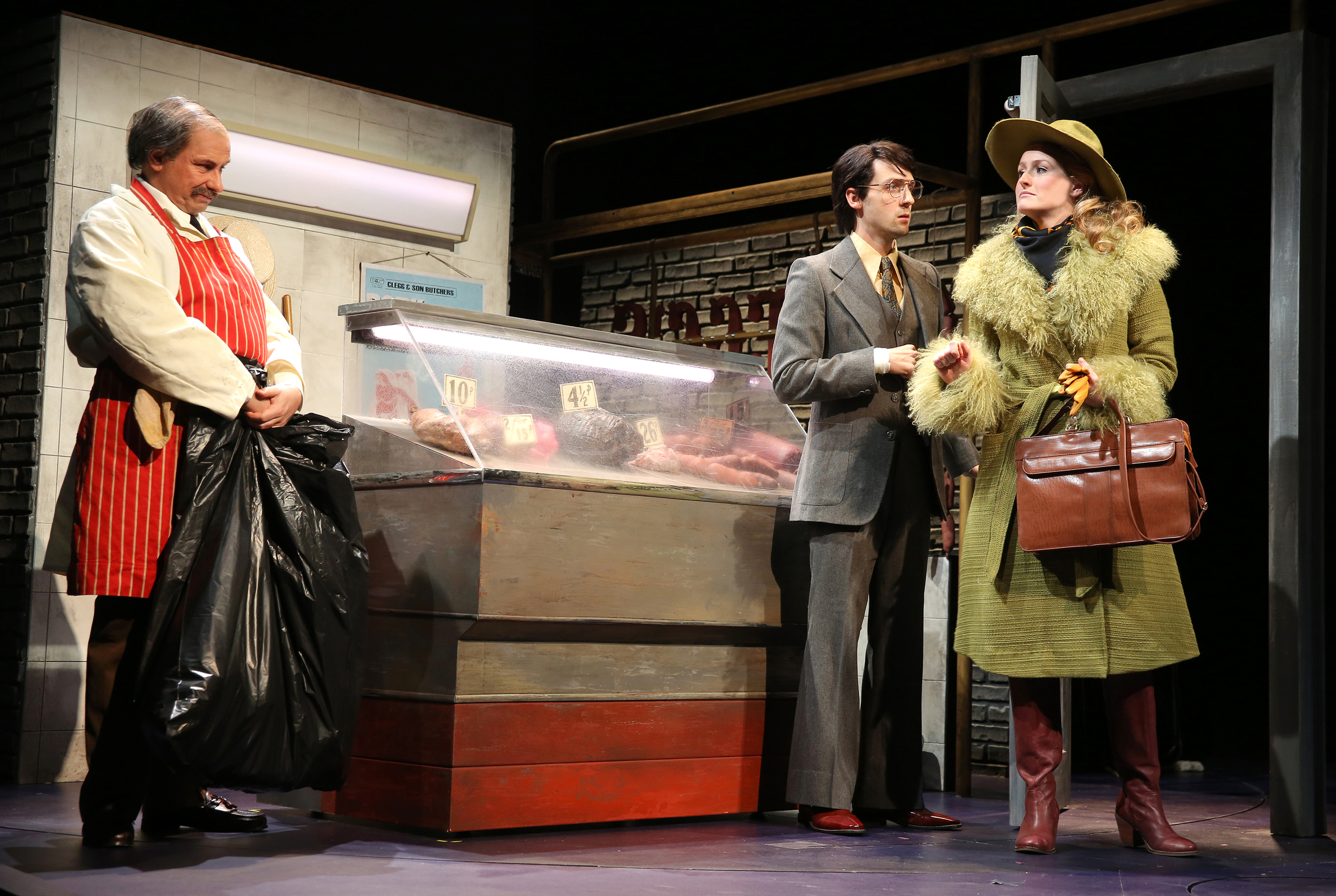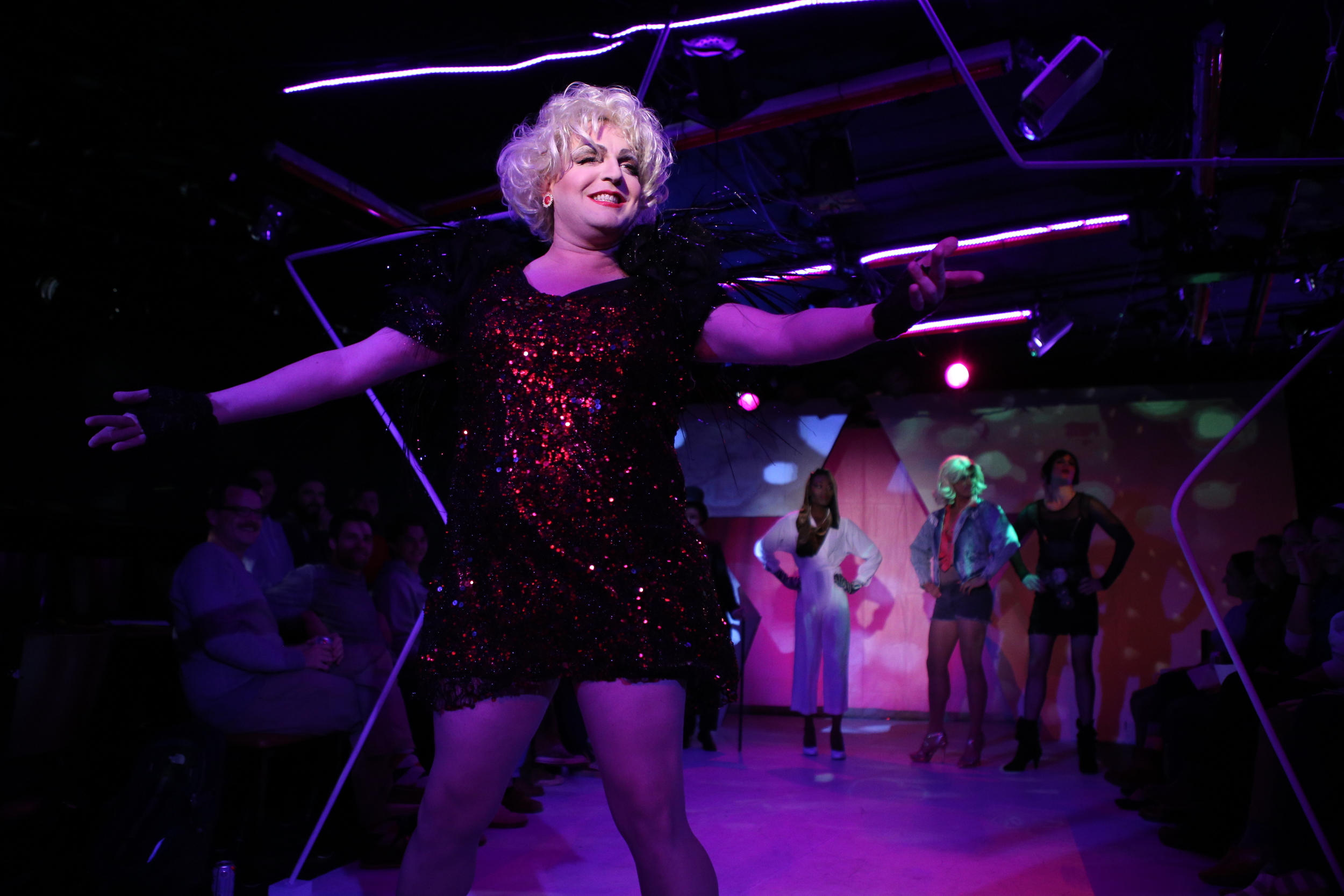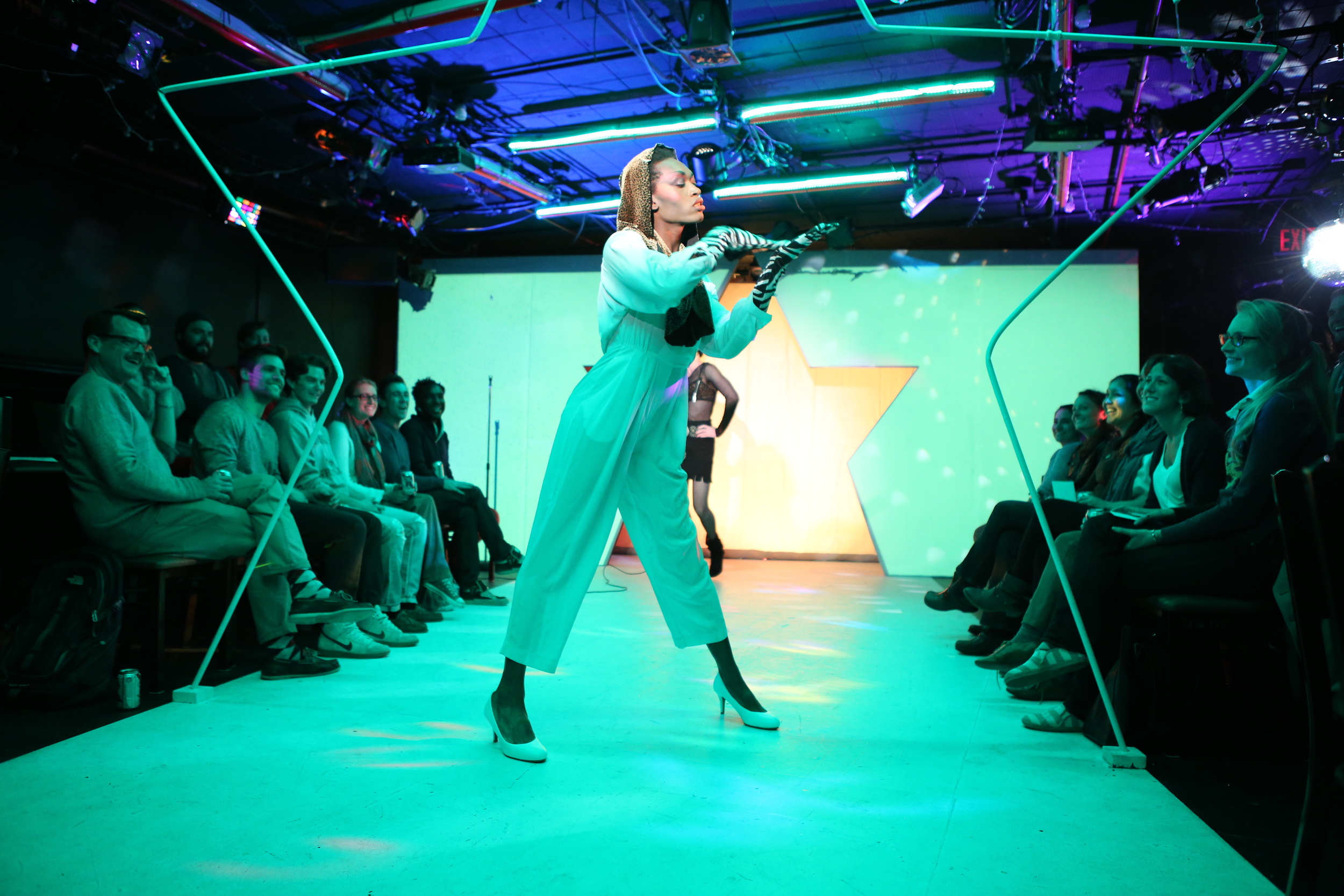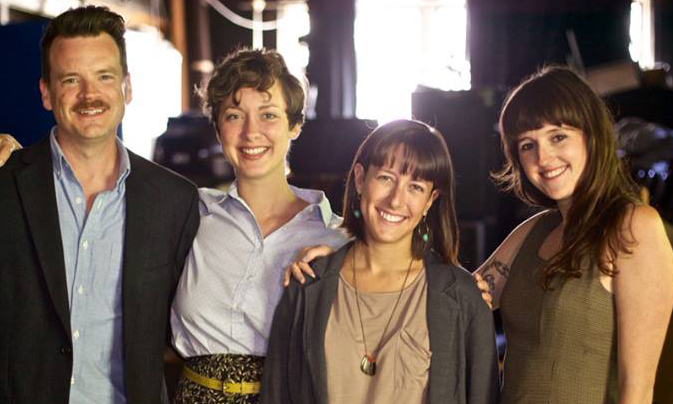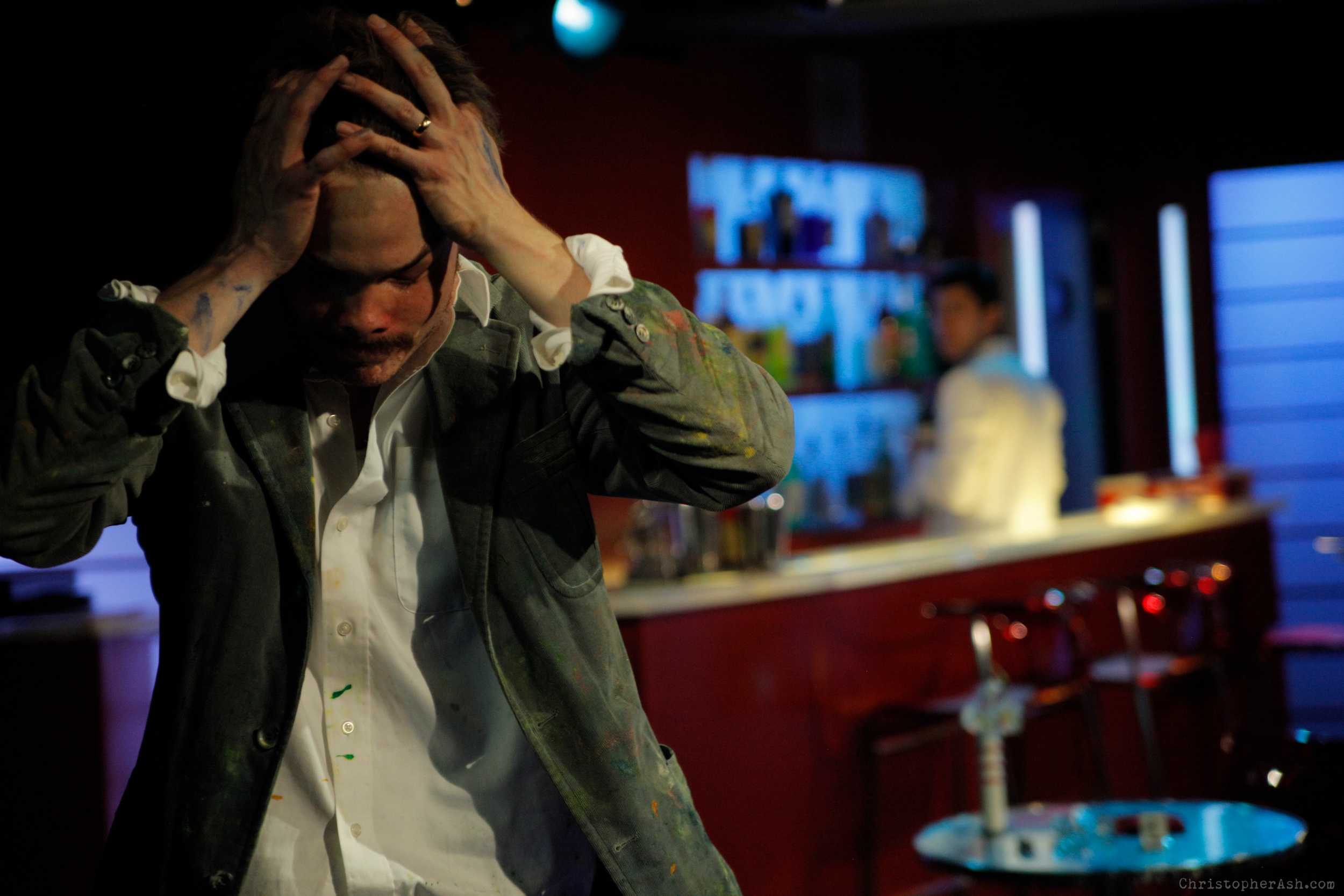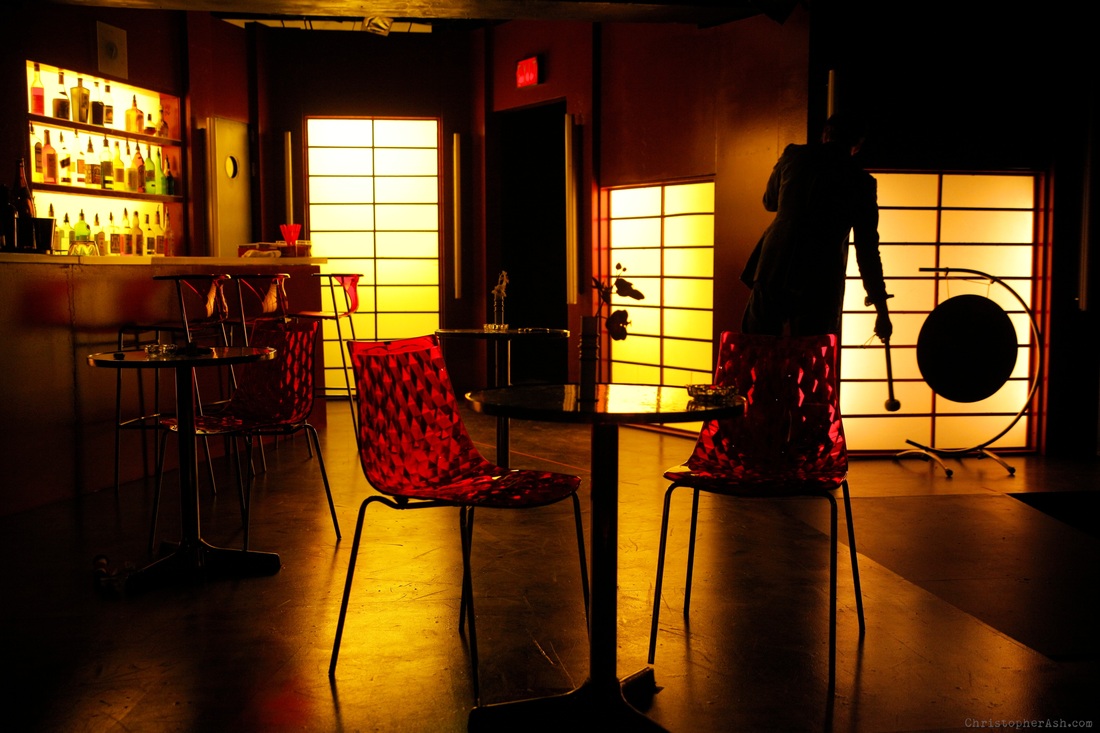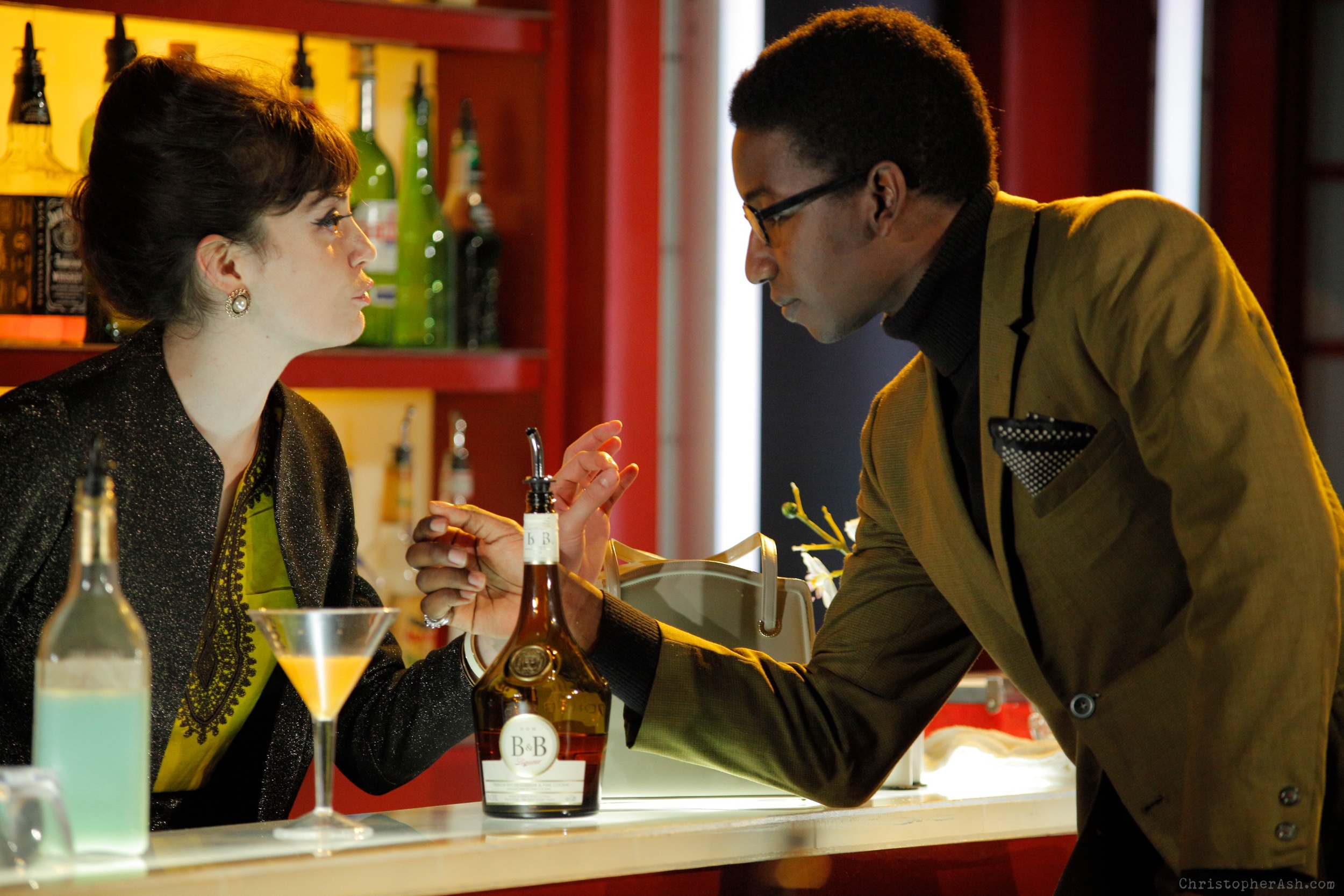 Yale Cabaret Season 46 is now just a memory. So let’s test our memories. Surveying the season, I’ve come up with five top picks in thirteen categories, as I have done for Seasons 45 (’12-’13) and 44 (’11-’12). Picks are listed in order of the show’s appearance, except the last named is my top choice.
First up, the category of pre-existing play adapted to the unique opportunities afforded by the ever-intimate Cab space: All of these had something to do with power dynamics and each was a gripping experience: Dutchman, the challenging provocation about erotics and racial profiling by LeRoi Jones/Amiri Baraka; erotomania as a work ethic between sisters in Jean Genet’s The Maids; He Left Quietly, Yaël Farber’s dramatization of the incarceration of an innocent man sentenced to death in apartheid South Africa; YSD alum Tarell Alvin McCraney’s exploration of the bonds and frictions between brothers as archetypes in The Brothers Size; and . . . Edward Bond’s daunting look at a world bereft of goods and memories, Have I None.
Yale Cabaret Season 46 is now just a memory. So let’s test our memories. Surveying the season, I’ve come up with five top picks in thirteen categories, as I have done for Seasons 45 (’12-’13) and 44 (’11-’12). Picks are listed in order of the show’s appearance, except the last named is my top choice.
First up, the category of pre-existing play adapted to the unique opportunities afforded by the ever-intimate Cab space: All of these had something to do with power dynamics and each was a gripping experience: Dutchman, the challenging provocation about erotics and racial profiling by LeRoi Jones/Amiri Baraka; erotomania as a work ethic between sisters in Jean Genet’s The Maids; He Left Quietly, Yaël Farber’s dramatization of the incarceration of an innocent man sentenced to death in apartheid South Africa; YSD alum Tarell Alvin McCraney’s exploration of the bonds and frictions between brothers as archetypes in The Brothers Size; and . . . Edward Bond’s daunting look at a world bereft of goods and memories, Have I None.
New plays inaugurated at the Cab this season, as usual, were a mixed bag, trying out eclectic forms: We Know Edie La Minx Had a Gun, by Helen Jaksch (*15), Kelly Kerwin (*15), Emily Zemba (*15) is a drag-show drama with music, comedy, and pathos; The Most Beautiful Thing in the World, conceived by Gabriel Levey (*14) and devised with Kate Tarker (*14), is a performance piece that invites the kinds of pitfalls theater is prone to, and brought the audience into the performance; The Defendant, by Elia Monte-Brown (*14), commands the attitudes and language of its teen characters, while walking a difficult line between comedy and unsettling social reality; The Mystery Boy, adapted by Chris Bannow (*14), is a frenetic theatrical romp as weird and vivid as the mind of a pre-teen; and . . . A New Saint for a New World by Ryan Campbell (*15) is a funny dialogue-driven exploration of faith and defiance through the figure of Joan of Arc.
For Sets, the created space wherein everything happens: the runway by way of Warhol for the camp and glam denizens of We Know Edie La Minx Had a Gun, by Christopher Ash (*14); the gritty prison space open to our view to make theater of incarceration for He Left Quietly, by Christopher Thompson (*16); the posters and atmosphere of a bygone theatrical era that lent much visual interest to The Crazy Shepherds of Rebellion, by Reid Thompson (*14); the striking combination of modern and ancient ruin that served as backdrop to graffiti art in We Fight We Die, by Jean Kim (*16); and . . . the improbable rooms within a room, meticulously outfitted and wrought for The Maids, by Kate Noll (*14).
For Lighting, that magical aspect of theater that adds so much atmosphere and affect to our viewing experience: Elizabeth Mak (*16) for the highly effective illuminations of the will-of-the-wisp figures in Crave; Oliver Wason (*14) for the use of light and dark to evoke the uncertain occurrences in The Small Room at the Top of the Stairs; Oliver Wason (*14) for the intricate lighting of actual interior space in The Maids; Oliver Wason (*14) for the different lighting for the different worlds—from domestic earth to prison to another planet—in A New Saint for a New World; and . . . Andrew F. Griffin (*16) for playing with light and dark in an almost musical way in The Brothers Size.
For Costumes, that aspect of the experience that helps us suspend our disbelief, and helps actors convince us of their characters’ reality: Hunter Kaczorowski (*14) for the stylish retro outfits of Radio Hour; Elivia Bovenzi (*14) for a cast of regular people and inspired clowns in Derivatives; Asa Benally (*16) for costuming a cavalcade of different plays in a short compass in The Crazy Shepherds of Rebellion; Fabian Aguilar (*16) for the varied habiliments of Joan of Arc’s ordeals in A New Saint for a New World—including space-age angels; and . . . Grier Coleman (*15) for the pastiche and aplomb, charm and chutzpa of We Know Edie La Minx Had a Gun.
More ethereal even than Lighting is Sound, but a telling aspect of any production in augmenting the action and creating a mental space to support the visual: Joel Abbott (*14) for tying together all the moods and styles of We Know Edie La Minx Had a Gun; Tyler Kieffer (*15) for the use of scored moments in the presentation of The Most Beautiful Thing in the World; Brian Hickey (*15) and Steve Brush (*14) for the razzle-dazzle TV-esque documentary and comedy productions of Derivatives; Tyler Kieffer for letting us eavesdrop so effectively in The Maids; and . . . Tyler Kieffer (*15) and Steve Brush (*14) for the radio soundscape and Foley art of Radio Hour.
For some productions, the visual element doesn’t end with Lighting, Sets, and Costumes, but acquires more presence through the use of projections and other special Visual Effects: Christopher Ash (*14) for the enhancement of the performance space of We Know Edie La Minx Had a Gun; Nick Hussong (*14) for the various charts and logos and floating backdrops in Derivatives; Kristin Ferguson (*15) for the striking and lyrical use of photographic projections in Bound to Burn; Joey Moro (*15) for the creation of different visual moods so important to Joan of Arc’s odyssey in A New Saint for a New World; and . . . Rasean Devonte Johnson (*16) for the graffitied visuals of We Fight We Die, and for adding to the fluid visual experience of The Brothers Size.
Use of Music is another element that, for some productions, is almost like adding another character or a special effect to color the action or complete it: Steve Brush (*14) for the songs and jingles and accompaniment so crucial to the aural world of Radio Hour; Jenny Schmidt (*14) for adding to the tensions and suggestiveness of The Small Room at the Top of the Stairs; Pornchanok Kanchanabanca (*16) for the enlivening musical asides that fleshed out the variety of The Crazy Shepherds of Rebellion; Mike Mills for the percussion that acts as Greek chorus to comment musically on—and even control—the action of The Brothers Size; and . . . Joel Abbott (*14) for the sensitive accompaniment that helped render the range of possible motives and actions in We Know Edie La Minx Had a Gun.
Another aspect of the experience of the play’s physical presence is how it moves—sometimes that means actual choreography and the creation of dance, other times it has to do with how much activity and physical interaction takes place in the show; choice examples of how intricate Movement greatly enhances a play are: the choreography of the drag queen sleuths by Kelly Kerwin (*15) for We Know Edie La Minx Had a Gun; the fluid use of the entire space and the highly expressive interactions directed by Hansol Jung (*14) in Crave; the dance numbers that told stories with movement and mime, choreographed by Rob Chikar (*14) and Alyssa Simmons (*14), in Bound to Burn; the incredibly active interludes bursting out of The Brothers Size, directed by Luke Harlan (*16); and . . . the prop-happy cast, creating sound effects and a variety of characters in different costumes while constantly on stage, of The Mystery Boy, directed by Chris Bannow (*14) and Helen Jaksch (*15).
In terms of Performance, some roles and actors move beyond the traditional “actor”/”actress” dualism, but as such is still the norm of awards shows, I’ll follow suit; for the xy chromosomes: as the one, the only, the much maligned and deeply mourned Edie La Minx: Seth Bodie (*14) in We Know Edie La Minx Had a Gun (*14); as Claire, “the pretty one” that Mistress should have designs on: Mickey Theis (*14) in The Maids; for his show-stopping turn as a Lena Horne impersonator in We Know Edie La Minx Had a Gun, and for acting out the gripping ordeal of Duma Kumalo in He Left Quietly, Ato Blankson-Wood (*15); as Ogun, the god of iron in the form of a paternalistic and truly fraternal car-shop owner in The Brothers Size, Jonathan Majors (*16); and . . . as the alleged brother who brings death to his sister in Have I None, and as the manipulative “sister” in The Maids, Chris Bannow (*14).
And in Performance, those actors with xx chromosomes: as Lula, the mercurial provocation on a subway car in Dutchman, Carly Zien (*14); as the introducer forced to provide the presentation, with improvised patter and invited responses, Kate Tarker (*14) in The Most Beautiful Thing in the World; as the curious, distraught and distrustful wife in The Small Room at the Top of the Stairs, Chasten Harmon (*15); as a Joan of Arc forced to be normal and then again extraordinary, Maura Hooper (*15) in A New Saint for a New World; and . . . as a woman at her wits’ end in a world of deprivations, Ceci Fernandez (*14) in Have I None.
For the task of somehow orchestrating all this diverse input and making decisions that create a coherent theatrical experience—for Directing, in other words: Jessica Holt (*15) for the harrowing world, driven by complex language and meaningful actions and silences, of Have I None; Cole Lewis (*14) for the mounting tensions and effective contrapuntal presentation of The Small Room at the Top of the Stairs; Sara Holdren (*15) for keeping a handle on comedy with cosmic dimensions, and drama with unsettling implications in A New Saint for a New World; Luke Harlan (*16) for the combination of movement, music, intense dialogue and strong characterizations in The Brothers Size; and . . . Dustin Wills (*14) for the challenging presentation and darkly comic tone of drama queens seduced by death behind closed doors but bare windows in The Maids.
Finally, for overall Production, which means having the wherewithal to make this thing happen, as enablers and aider-abetters, the producers and dramaturgs of the shows that impressed me most: We Know Edie La Minx Had a Gun: Emika Abe (*15), producer, and Helen Jaksch (*15), dramaturg; Have I None: Molly Hennighausen (*15), producer, and Hugh Farrell (*15), dramaturg; A New Saint for A New World: Sally Shen, producer, and Helen Jaksch (*15), dramaturg; The Brothers Size: Alyssa Simmons (*14) and Melissa Zimmerman (*14), producers, and Taylor Barfield (*16), dramaturg; and . . . The Maids: Lauren Wainwright (*14), producer, and Tanya Dean (*14), dramaturg.
Some of those mentioned have completed their time at YSD—best of luck in all you do!—and others have a year or two to go. Thanks to all for their dedication, talent, and spirited engagement with the special performance space that is the Yale Cabaret. And to this year's departing team, Whitney Dibo, Lauren Dubowski, Kelly Kerwin, and Shane Hudson, many thanks for a lively season.
Coming soon: a preview of the Yale Summer Cabaret, with Artistic Directors Jessica Holt and Luke Harlan, and Managing Director Gretchen Wright.
See you next year, at the Cab!--with Artistic Directors Hugh Farrell, Tyler Kieffer, Will Rucker, and Managing Director Molly Hennighausen.

